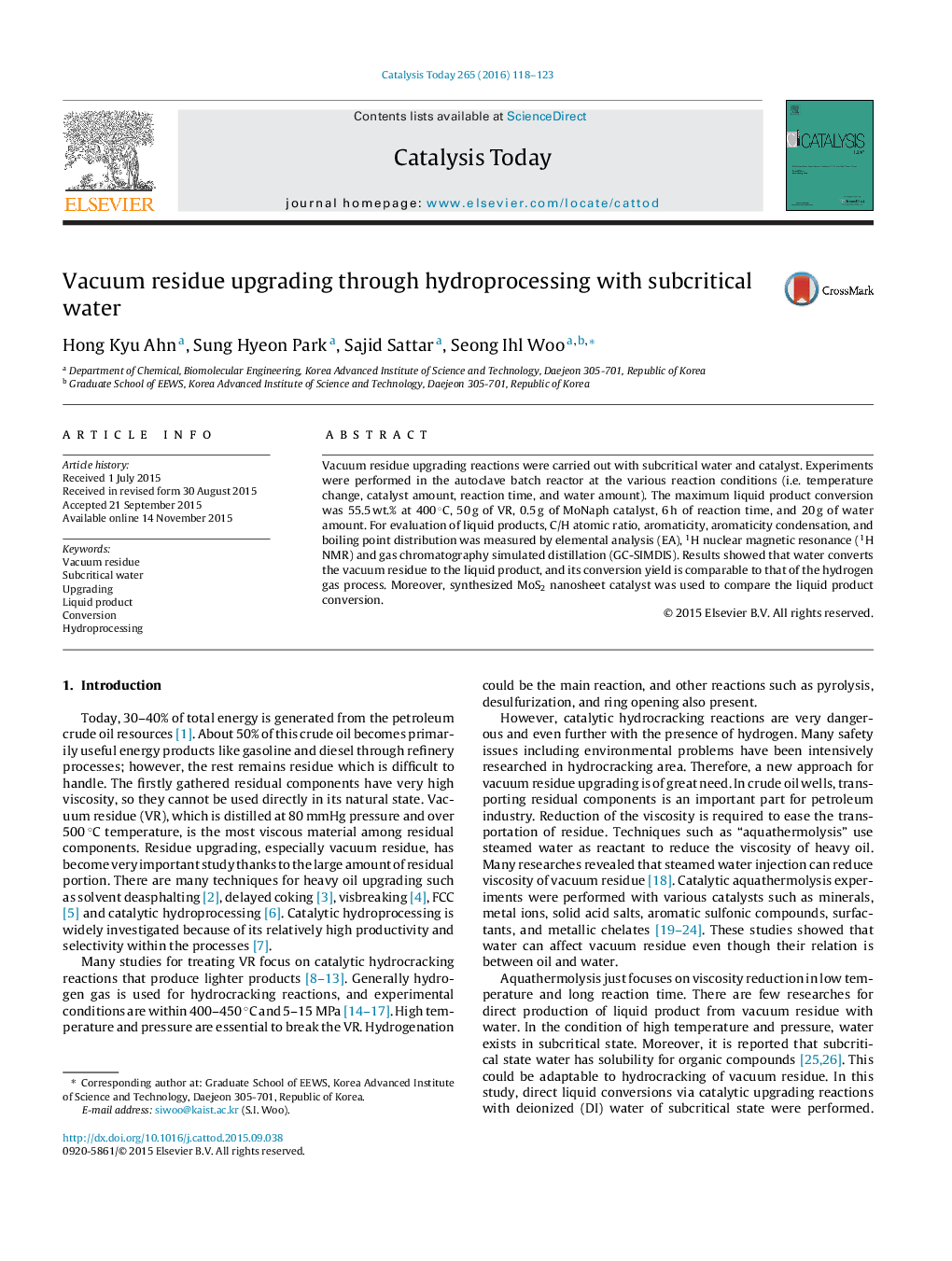| Article ID | Journal | Published Year | Pages | File Type |
|---|---|---|---|---|
| 53794 | Catalysis Today | 2016 | 6 Pages |
•Subcritical state water was used for vacuum residue upgrading.•Experiments were performed in the various reaction conditions.•Liquid products were analyzed using EA, NMR and GC SIMDIS.•Liquid product conversions are comparable to that of the hydrogen gas process.
Vacuum residue upgrading reactions were carried out with subcritical water and catalyst. Experiments were performed in the autoclave batch reactor at the various reaction conditions (i.e. temperature change, catalyst amount, reaction time, and water amount). The maximum liquid product conversion was 55.5 wt.% at 400 °C, 50 g of VR, 0.5 g of MoNaph catalyst, 6 h of reaction time, and 20 g of water amount. For evaluation of liquid products, C/H atomic ratio, aromaticity, aromaticity condensation, and boiling point distribution was measured by elemental analysis (EA), 1H nuclear magnetic resonance (1H NMR) and gas chromatography simulated distillation (GC-SIMDIS). Results showed that water converts the vacuum residue to the liquid product, and its conversion yield is comparable to that of the hydrogen gas process. Moreover, synthesized MoS2 nanosheet catalyst was used to compare the liquid product conversion.
Graphical abstractFigure optionsDownload full-size imageDownload high-quality image (116 K)Download as PowerPoint slide
